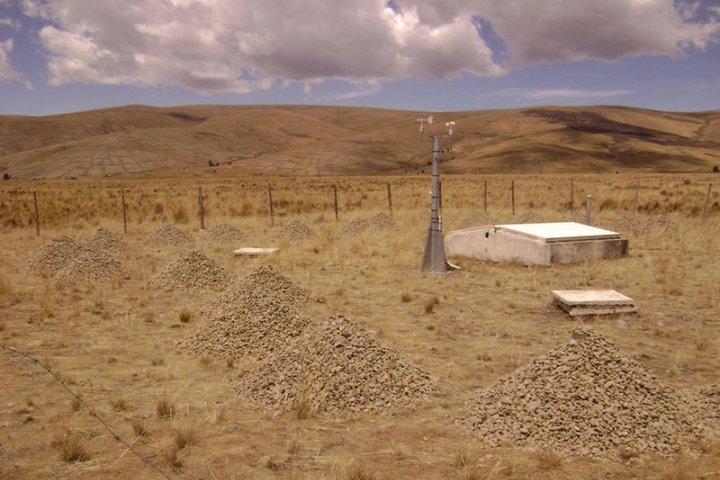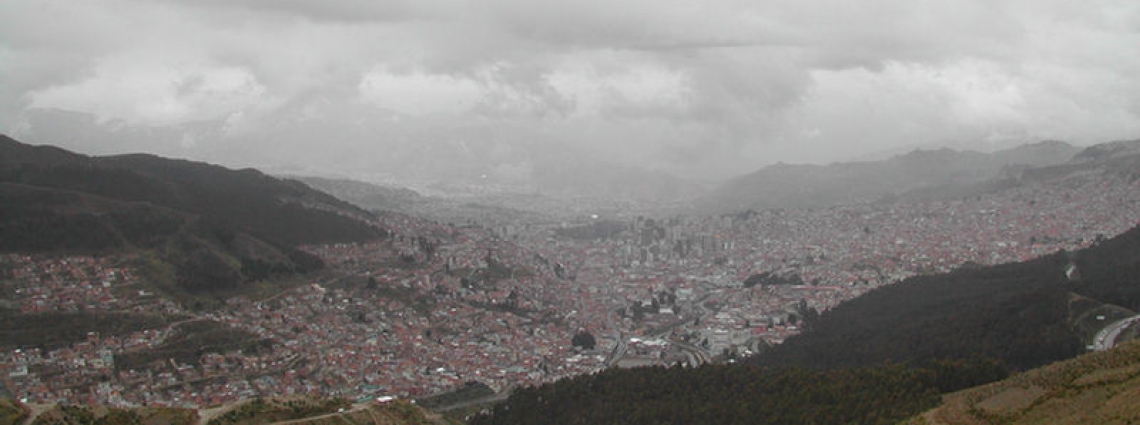Bolivia leverages CTBT data to launch first-ever seismic design code
In November 2023, Bolivia introduced its first-ever national seismic design standard for structural resilience. This groundbreaking achievement was made possible through the use of seismic monitoring data from the Comprehensive Nuclear-Test-Ban Treaty Organization (CTBTO).
Bolivia is located along the Pacific Ring of Fire, an area responsible for 90 percent of the world’s earthquakes. The Nazca plate’s movement beneath the South American continental plate creates significant seismic activity, posing serious risks to urban centres such as La Paz, El Alto, and Cochabamba. These dense population hubs are especially vulnerable, making the need for robust seismic standards all the more urgent.

Infrasound station IS08, La Paz, Bolivia

Antenna of CTBTO primary seismic station PS06, La Paz, Bolivia
A Decade of Collaboration and Commitment
The Bolivian Seismic Design Standard (BSDS) is the result of more than a decade of dedicated work by Bolivia’s Ministry of Public Works, Services and Housing, in collaboration with universities and organizations such as the San Calixto Observatory. With over 100 years of experience monitoring seismic activity at local, regional, and global levels, this observatory has built an invaluable seismic catalogue. As Bolivia’s CTBTO National Data Centre (NDC), it plays a vital role in advising the government on verifying the Comprehensive Nuclear-Test-Ban Treaty (CTBT). NDCs are central to the Treaty’s global monitoring network, providing national authorities with critical insights to support informed decision-making and uphold their commitments to the CTBT.
PS06: A Jewel of Seismic Monitoring
CTBTO’s seismic stations were instrumental in shaping the BSDS. Data from primary seismic station PS06 in La Paz and auxiliary seismic station AS08 in San Ignacio, along with Bolivia’s national network, formed the backbone of the new standard. Notably, 40 of the 42 seismic records used in developing the BSDS were sourced from PS06.

Surroundings of PS06, La Paz, Bolivia
Perched on the rocky slopes of Mount Huayna Potosí, PS06 has been serving Bolivia since 1972. The station joined CTBTO’s International Monitoring System (IMS) in 2003. Situated 100 metres underground for broadband monitoring and 50 metres for short-period detection, PS06 offers incredibly low noise levels, providing precise and dependable data.
From Reliance to Resilience
Before 2023, Bolivia relied on international guidelines for designing earthquake-resistant buildings. With localised and accurate data from CTBTO’s seismic network, the country has now developed its own tailored standards.
The BSDS provides clear guidelines for construction professionals, establishing minimum criteria for designing and constructing earthquake-resistant buildings. These standards, which apply to both public and private structures, are complemented by a seismic hazard map to guide safe construction practices. By minimising the potential loss of life and reducing property damage, the BSDS sets the foundation for a safer and more resilient Bolivia.

Bolivia’s Minister of Public Works, Édgar Montaño presenting Bolivian Seismic Design Standard (Source: Ministry of Public Works, Services and Housing of Bolivia)
CTBTO Data: Unlocking Potential Beyond Monitoring
The creation of the BSDS underscores the far-reaching benefits of CTBTO’s IMS data beyond nuclear test monitoring. By supporting civil and scientific applications, the CTBTO contributes to achieving the Sustainable Development Goals (SDGs), particularly SDG 11, which focuses on making cities resilient to natural disasters.
This isn’t the first time data from the Organization’s IMS facilities have contributed to important advancements. They have supported discoveries like a new population of Pygmy blue whales and helped in efforts to mitigate the damage caused by natural disasters such as tsunamis and volcanic eruptions.
28 Jan 2025

Bolivian Seismic Design Standard introduced in November 2023


